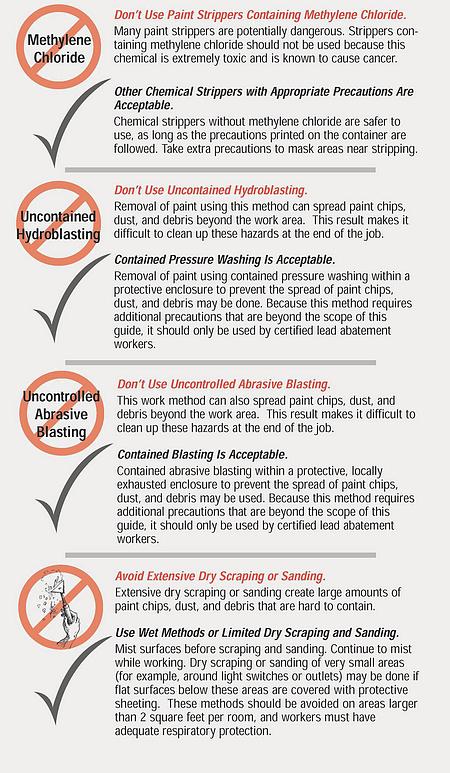Delegated States Likely Better Prepared To Enforce EPA RRP Rule
Several states around the country have assumed administration and enforcement of the EPA RRP rule and others are also thinking of doing the same. EPA actually offers money for the states to use to investigate the practicality of doing so. As this happens each state must create its own rule which is at least as strict as the EPA rule in order to get approval to do so from the EPA. This will lead to confusion for many renovators.
 Variances in the rule requirements, from the EPA RRP rule and also from state to state, will make it difficult for renovators to understand the differences and keep up with amendments made by each entity. Renovators working in more than one state many have to become certified firms in each state they operate in and or also with the EPA. Are renovators better off if their states write a better thought out rule? Would renovators be better served if there was just one well written rule for everyone to follow? I predict that confusion may likely contribute to violations and fines for these renovators.
Variances in the rule requirements, from the EPA RRP rule and also from state to state, will make it difficult for renovators to understand the differences and keep up with amendments made by each entity. Renovators working in more than one state many have to become certified firms in each state they operate in and or also with the EPA. Are renovators better off if their states write a better thought out rule? Would renovators be better served if there was just one well written rule for everyone to follow? I predict that confusion may likely contribute to violations and fines for these renovators.
 In July of this year Massachusetts took over administration and enforcement of the RRP rule. The Massachusetts Regulations, written by the Massachusetts Department of Occupational Safety (DOS), include many of the OSHA related considerations left out of the EPA RRP rule and the EPA required certified renovator training. As a result, Massachusetts contractors are quickly becoming aware of the already existing OSHA considerations related to working with lead. For example, the Massachusetts firm licensing application includes a requirement that a written respiratory protection and worker health and safety program evidencing compliance with the Massachusetts RRP rule and OSHA medical monitoring requirements be submitted with the application. This will force businesses to have such a program in place before they can be licensed to do RRP work. The requirement will also serve to dictate what the business must have in place should they be inspected by either the DOS or OSHA. I predict the need for OSHA related training will increase dramatically as contractors become aware of violations and fines levied against their peers.
In July of this year Massachusetts took over administration and enforcement of the RRP rule. The Massachusetts Regulations, written by the Massachusetts Department of Occupational Safety (DOS), include many of the OSHA related considerations left out of the EPA RRP rule and the EPA required certified renovator training. As a result, Massachusetts contractors are quickly becoming aware of the already existing OSHA considerations related to working with lead. For example, the Massachusetts firm licensing application includes a requirement that a written respiratory protection and worker health and safety program evidencing compliance with the Massachusetts RRP rule and OSHA medical monitoring requirements be submitted with the application. This will force businesses to have such a program in place before they can be licensed to do RRP work. The requirement will also serve to dictate what the business must have in place should they be inspected by either the DOS or OSHA. I predict the need for OSHA related training will increase dramatically as contractors become aware of violations and fines levied against their peers.
 The MA DOS has also started conducting on-site inspections. Though most inspections are triggered by citizens reporting suspected violations, the DOS is also out in the field and is stopping by renovation projects as they come across them. In one of his recent blogs, RRP certification training provider and business coach, Mark Paskell of The Contractor Coaching Partnership, shares a real life story of a painter who was visited by DOS after a neighbor next door to one of his projects called the DOS with concerns about soil contamination. The contractor was in compliance and made out fine, but the DOS left him with a message and asked that he would share it with others. "Tell every contractor you know we're out there enforcing. Tell your friends, your neighbors, other contractors you know, suppliers and trades. We are here and we will enforce the new law"
The MA DOS has also started conducting on-site inspections. Though most inspections are triggered by citizens reporting suspected violations, the DOS is also out in the field and is stopping by renovation projects as they come across them. In one of his recent blogs, RRP certification training provider and business coach, Mark Paskell of The Contractor Coaching Partnership, shares a real life story of a painter who was visited by DOS after a neighbor next door to one of his projects called the DOS with concerns about soil contamination. The contractor was in compliance and made out fine, but the DOS left him with a message and asked that he would share it with others. "Tell every contractor you know we're out there enforcing. Tell your friends, your neighbors, other contractors you know, suppliers and trades. We are here and we will enforce the new law"
NOTE: EPA has authorized nine states to administer their own RRP programs: Iowa, Kansas, Massachusetts, Mississippi, North Carolina, Oregon, Rhode Island, Utah and Wisconsin.

 Looking for accurate information about the EPA RRP rule?
Looking for accurate information about the EPA RRP rule? 

 If an EPA enforcement employee and and OSHA Field inspector show up at one of your jobsites, at the same time, there is no way you will be able to satisfy both. I suggest this is another example of shortsighted leadership within both organizations. It also points out the lack of knowledge and awareness our political leaders in Congress have as it relates to understanding the construction industry and overseeing the creation of regulations that affect businesses of all sizes.
If an EPA enforcement employee and and OSHA Field inspector show up at one of your jobsites, at the same time, there is no way you will be able to satisfy both. I suggest this is another example of shortsighted leadership within both organizations. It also points out the lack of knowledge and awareness our political leaders in Congress have as it relates to understanding the construction industry and overseeing the creation of regulations that affect businesses of all sizes.
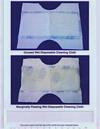 d. As an extra level of protection for you, your business, your employees, your customer and/or the occupants of the space you are renovating; if you plan to use the strategy suggested in item "1b" above, I suggest you still do the post renovation cleaning and cleaning verification procedure as required under the RRP Rule before restarting work again on July 6th.
d. As an extra level of protection for you, your business, your employees, your customer and/or the occupants of the space you are renovating; if you plan to use the strategy suggested in item "1b" above, I suggest you still do the post renovation cleaning and cleaning verification procedure as required under the RRP Rule before restarting work again on July 6th.
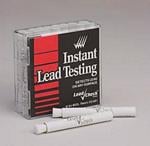




 EPA Answer: Not necessarily. "Child-occupied facility'' means a building, or portion of a building, constructed prior to 1978, visited regularly by the same child, under 6 years of age, on at least two different days within any week (Sunday through Saturday period), provided that each day's visit lasts at least 3 hours and the combined weekly visits last at least 6 hours, and the combined annual visits last at least 60 hours. Child-occupied facilities may include, but are not limited to, day care centers, preschools and kindergarten classrooms. Child-occupied facilities may be located in target housing or in public or commercial buildings.
EPA Answer: Not necessarily. "Child-occupied facility'' means a building, or portion of a building, constructed prior to 1978, visited regularly by the same child, under 6 years of age, on at least two different days within any week (Sunday through Saturday period), provided that each day's visit lasts at least 3 hours and the combined weekly visits last at least 6 hours, and the combined annual visits last at least 60 hours. Child-occupied facilities may include, but are not limited to, day care centers, preschools and kindergarten classrooms. Child-occupied facilities may be located in target housing or in public or commercial buildings. 




 In the new
In the new  In a June 3, 2010
In a June 3, 2010 
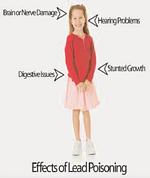 Statistics have shown, including EPA's own research, that more children are poisoned by lead due to renovations as a result of their parents doing the work than by professional remodelers.
Statistics have shown, including EPA's own research, that more children are poisoned by lead due to renovations as a result of their parents doing the work than by professional remodelers. 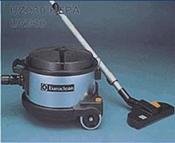
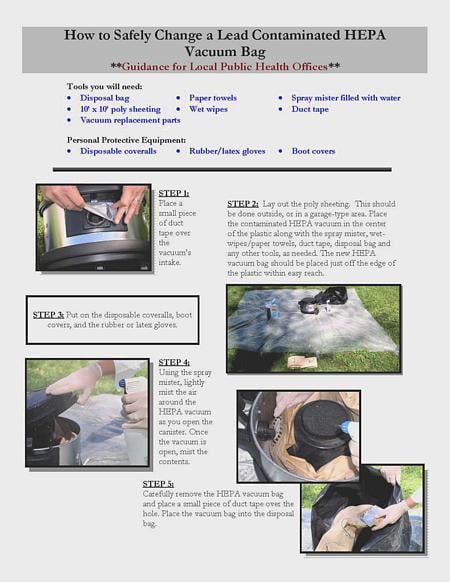
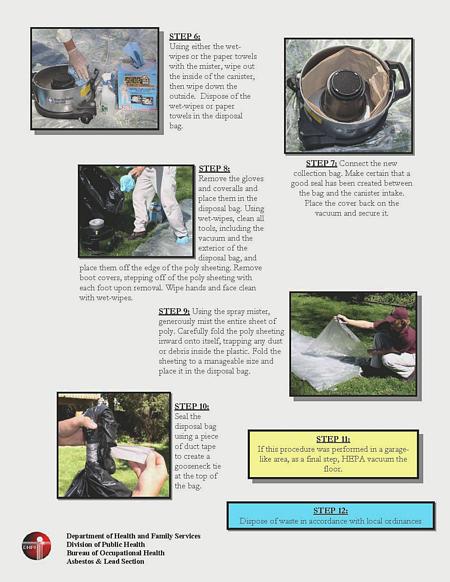
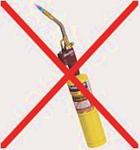
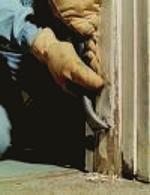 Note: The final rule does not prohibit or restrict the use of dry hand sanding or dry hand scraping. EPA has concluded that it is not necessary to prohibit or restrict dry hand sanding or dry hand scraping because the containment, cleaning, and cleaning verification requirements of the rule are effective at minimizing exposure to lead-based paint hazards created by renovations and the migration of dust-lead hazards beyond the work area when dry hand sanding or dry hand scraping is employed.
Note: The final rule does not prohibit or restrict the use of dry hand sanding or dry hand scraping. EPA has concluded that it is not necessary to prohibit or restrict dry hand sanding or dry hand scraping because the containment, cleaning, and cleaning verification requirements of the rule are effective at minimizing exposure to lead-based paint hazards created by renovations and the migration of dust-lead hazards beyond the work area when dry hand sanding or dry hand scraping is employed.
